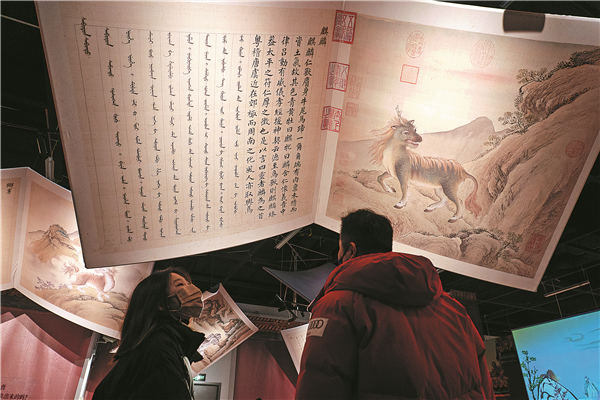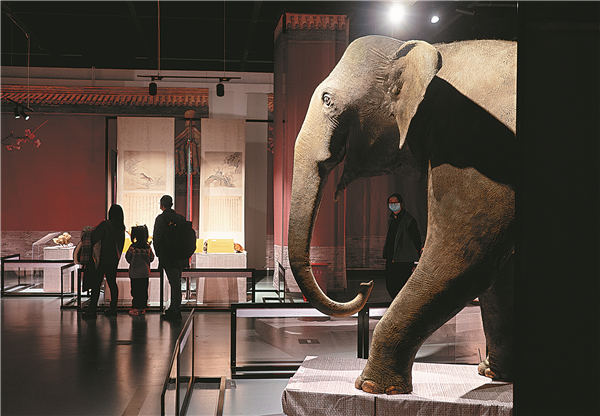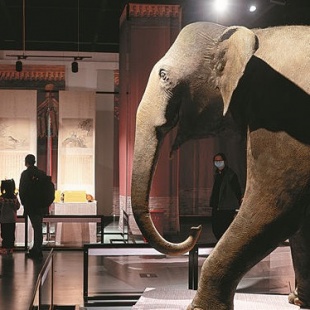Science mixes with culture


Exhibition showcases paintings and specimens of animals and imaginary creatures, Zhang Kun reports in Shanghai.
An exhibition at the Shanghai Natural History Museum is showing 18th-century Chinese paintings of animals and specimens linking culture and science.
The show, which started in mid-January and will run through to May, marks the first major collaboration between the Palace Museum in Beijing and the Shanghai Science and Technology Museum to which the natural history museum is affiliated.
Thirty-one paintings of animals and legendary creatures were selected from Shou Pu, or Chart of Animals, a book from the collection of the Palace Museum, to be exhibited among the animal specimens at the natural history museum.
The chart was compiled during the reign of Emperor Qianlong from 1736 to 1796 and consists of 180 creatures painted by imperial artists Yu Sheng and Zhang Weibang in the traditional realistic fine-brush style. Furnished with information about each animal's biological characteristics, habitats and the cultural connotations, the paintings reflect ancient Chinese people's knowledge and understanding of the animals. Aside from real animals such as the tiger, wolf and bear, the chart also includes imaginary creatures such as baize, which "spoke human language" and showed up only when a virtuous emperor was in court.

The first chapter of the show features seven well-known folklore creatures through high-resolution images and an interactive media projection and contains an analysis of their origins.
"These magical creatures embodied the wishes and spiritual pursuits of ancient Chinese people," says Zhang Yunfei from the Shanghai Natural History Museum. "They are an important composition of Chinese culture."
The Shanghai Natural History Museum, one of the earliest such institutions in China, opened in the 1860s as the Royal Asiatic Society founded by a French missionary.





































